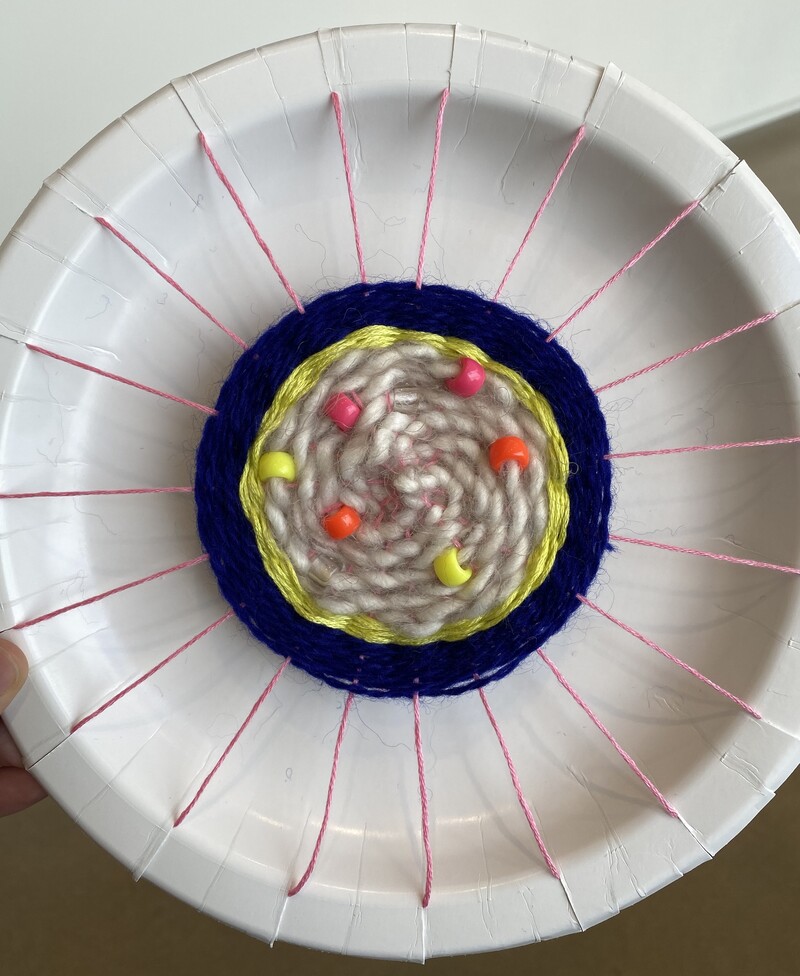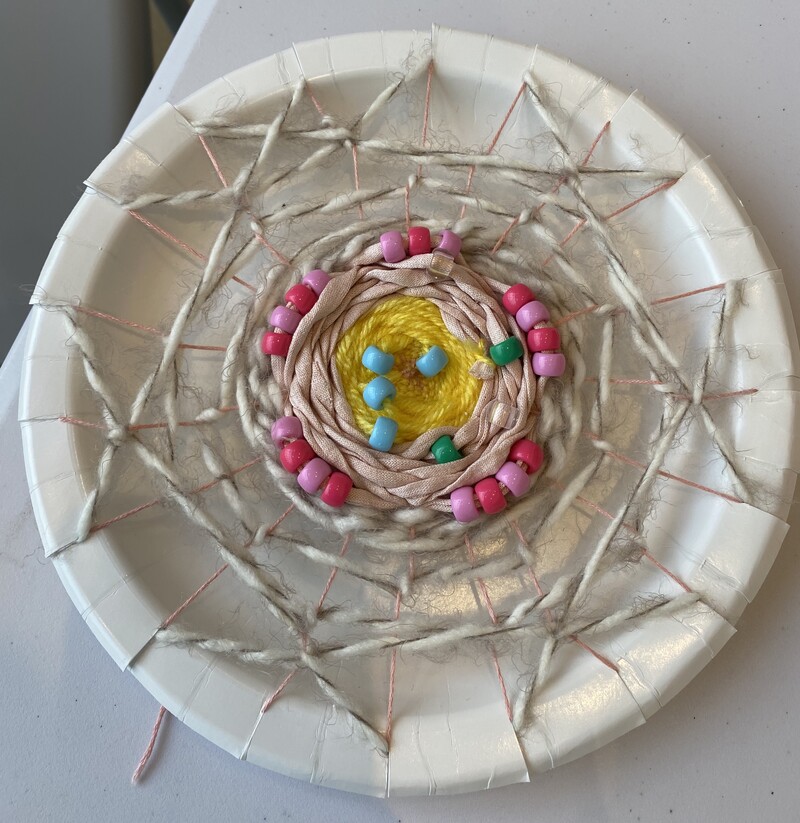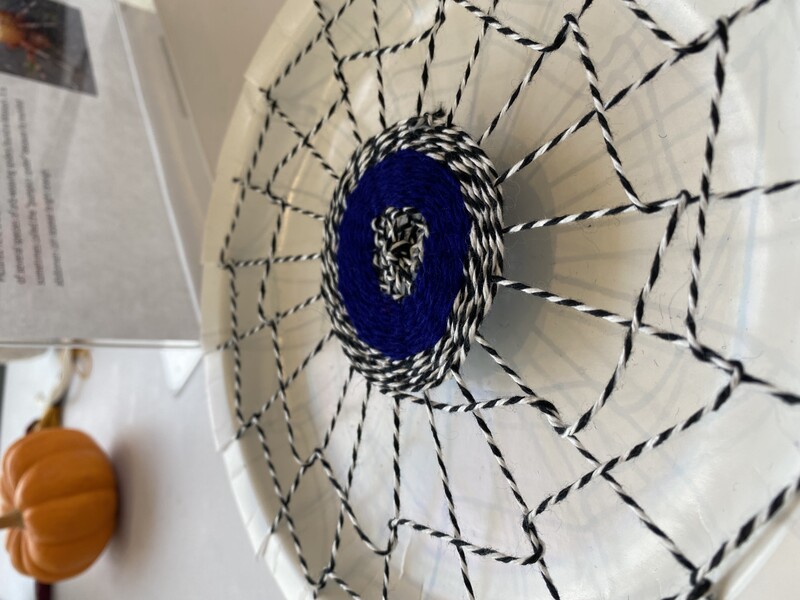Spiderweb Weaving

Take a cue from Tomás Saraceno’s Cosmic Filaments and create your own spiderweb while learning the art of weaving.
Download the educator resource and activity sheet for this activity:
Introduction
The contemporary artist Tomás Saraceno designed the installation Cosmic Filaments for the Mildred Lane Kemper Art Museum in 2019. The site-specific installation stretches across the ceiling and comprises iridescent three-dimensional geometric forms suspended in a network of ropes that replicate the strength, flexibility, and intricacies of a spiderweb. Saraceno studies the various webs that different species of spiders create and has collaborated with scientists to research the mechanics of spider silk. He is also concerned with the protection of spiders and other invertebrate species that are essential to the health of Earth’s ecosystems but have declining populations due to human impact.
This activity takes inspiration from the orb-weaving spider, a species that spins spiral-shaped webs. To build their webs, orb-weaving spiders first construct radial supports out of strong dragline silk, resembling spokes on a bicycle wheel. These supports provide a structure and anchor points for the web. The spiders then complete their webs by spiraling sticky thread around the radial web supports. Follow the steps below to weave your own spiral-shaped web.
Learn more about spiders from the Missouri Department of Conservation.
Materials
- Round paper plate
- Scissors
- Yarn in a variety of colors and textures
- Beads (optional)
Steps
Step 1: Create your circle loom
First transform your paper plate into a circular loom. Cut an odd number of notches that are about ½-inch deep around the rim of the plate.
Step 2: Warp your loom
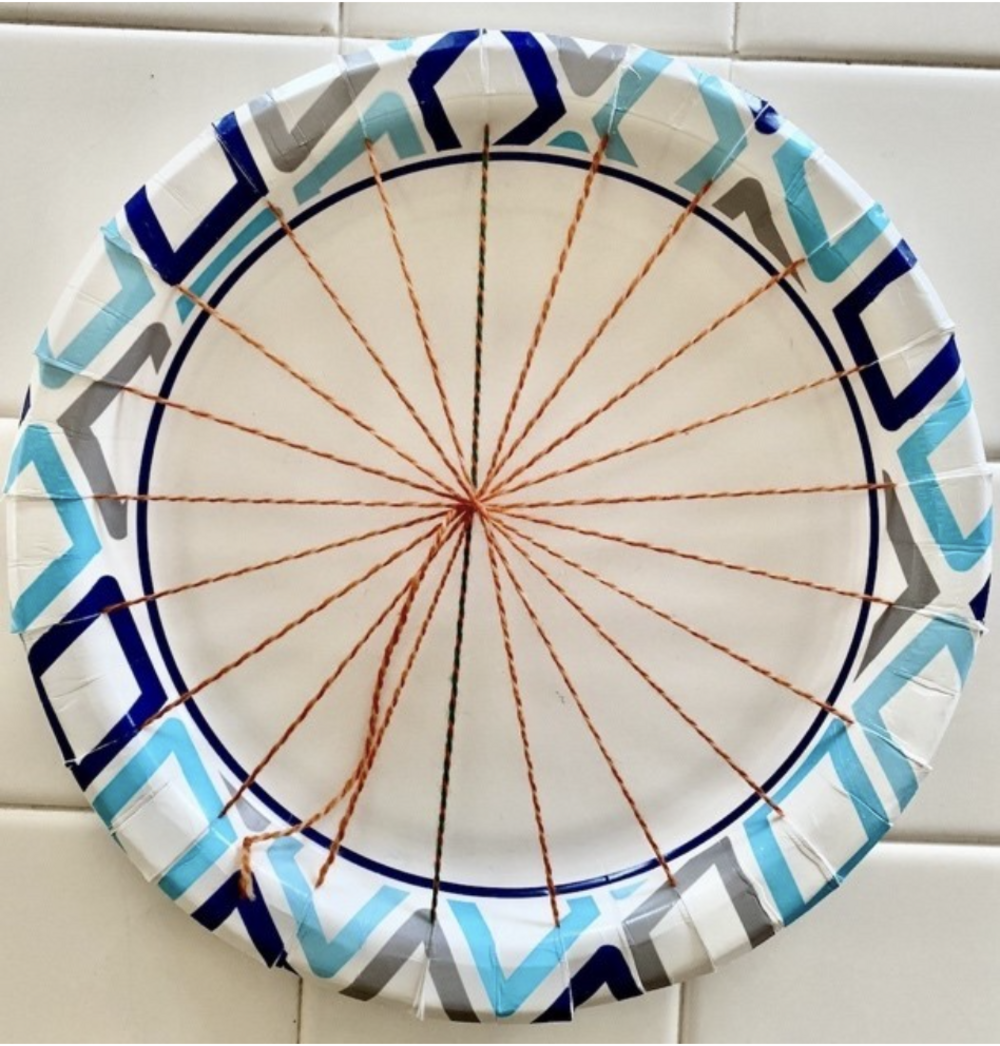
Take a piece of thin, strong yarn to make the warp threads on your loom. The warp threads provide a structure on which to weave, and they hold your weaving securely on the loom. The warp threads are like an orb-weaving spider’s radial web supports made of sturdy dragline silk.
Put the tail end of the yarn in the notch at the top of your plate. There should be a short tail about the length of your finger in the back while the rest of the yarn hangs in the front. Bring the length of yarn straight down the front dividing the plate in half and insert the yarn into the bottom notch. Cross the long length of yarn on the underside of the plate and pull it through the notch to the right of the top notch where you started. Then bring the yarn back down across the front of the plate and through the notch to the left of the bottom notch, creating a narrow X.
Repeat this pattern, rotating the plate, until you have warp threads in all the notches and they look like spokes on a bicycle wheel. To finish the warp, bring the remaining piece of yarn to the center where all the warp threads intersect and loop it over and under the center star, tying a knot. Trim the yarn end to a few inches in length.
Step 3: Weave your web
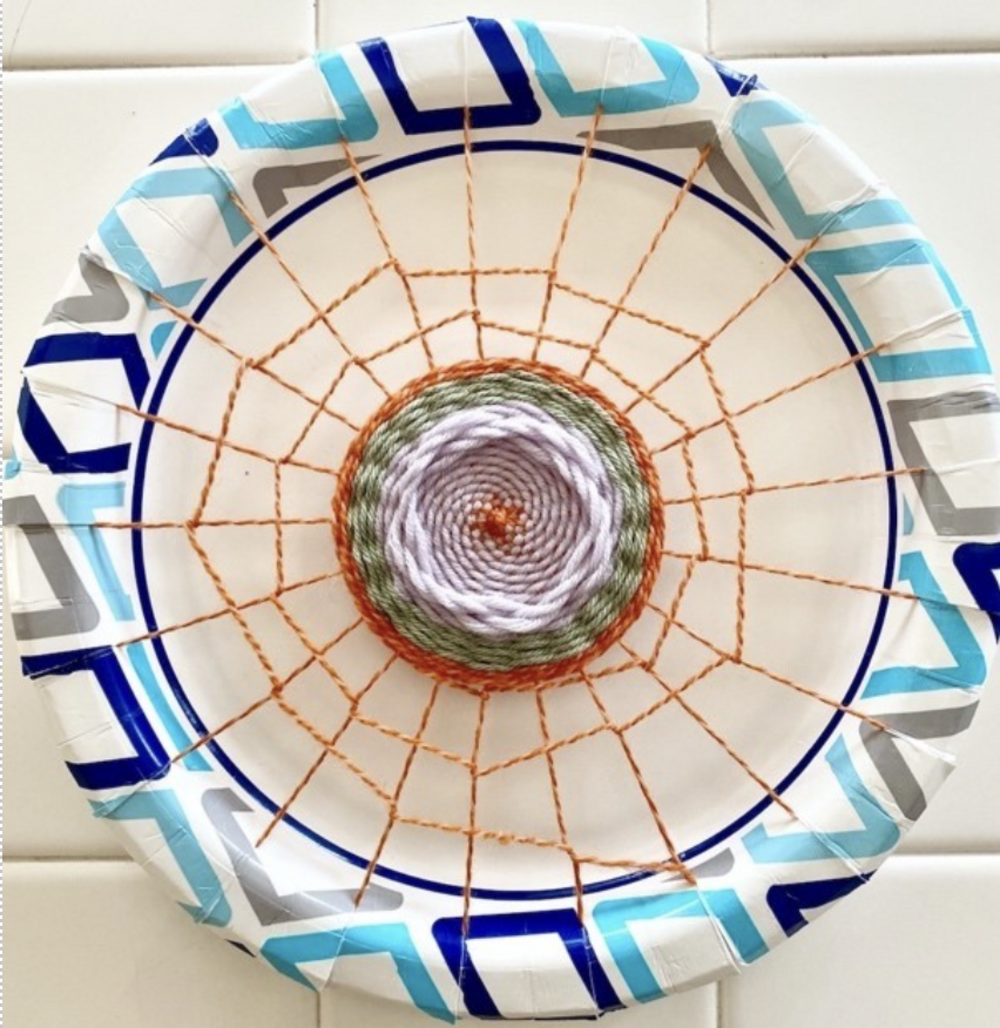
Now that you have the structure of warp threads in place, you can start weaving weft threads in a spiral to create your web. These weft threads are like the sticky silk that spiders use to catch their prey. Pick another color of yarn and tie it to the loose end of warp thread at the center of the loom with a double knot. Weave the yarn over and under the warp threads in a circular spiral following the pattern “over one, under one.” Gently pull on the yarn to tighten your weaving.
Bring different patterns and textures into your weaving. Here are some ideas to get started:
- Try other weaving patterns like “over three, under one” or “under three, over one.”
- Thread beads onto the weft thread while weaving to trap them like insects in your web.
- Alternate colors by cutting your weft thread and tying on yarn in a different color.
- Loop the weft thread around the warp threads to create a different kind of pattern.
Step 4: Finish your spiderweb weaving
When you are satisfied with the appearance of your weaving, secure it by pulling the tail end of your weft thread through one of the notches in the rim of the plate. Trim the thread and tape it to the back of the plate.
What are some similarities between your weaving and the web of an orb-weaving spider?
Student Projects
